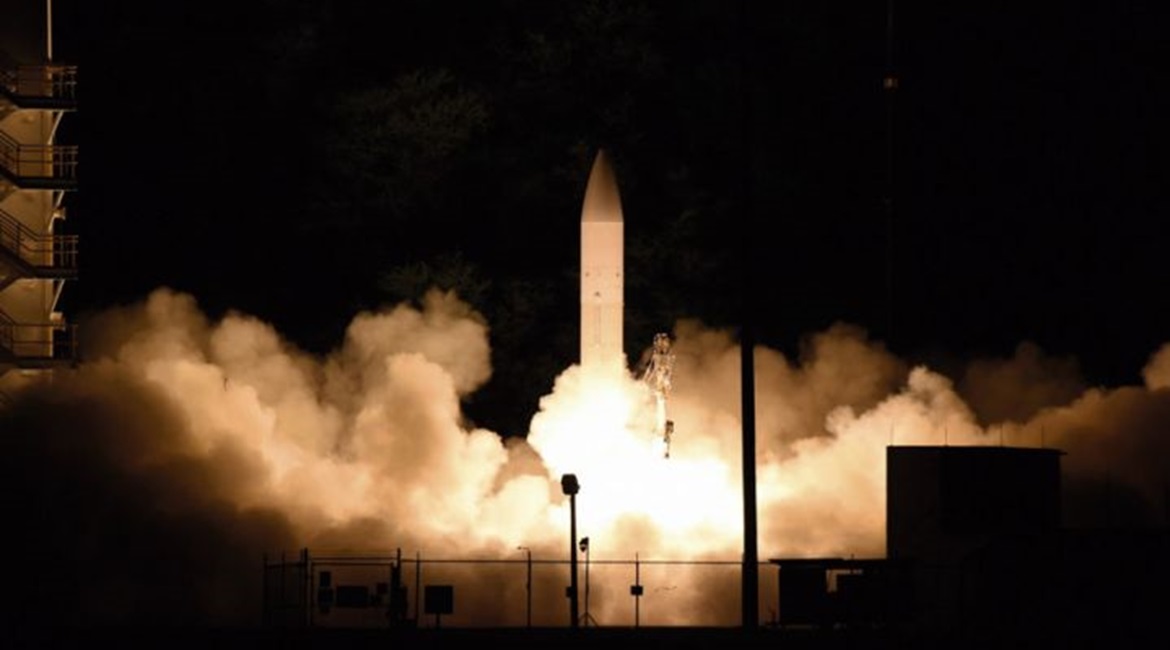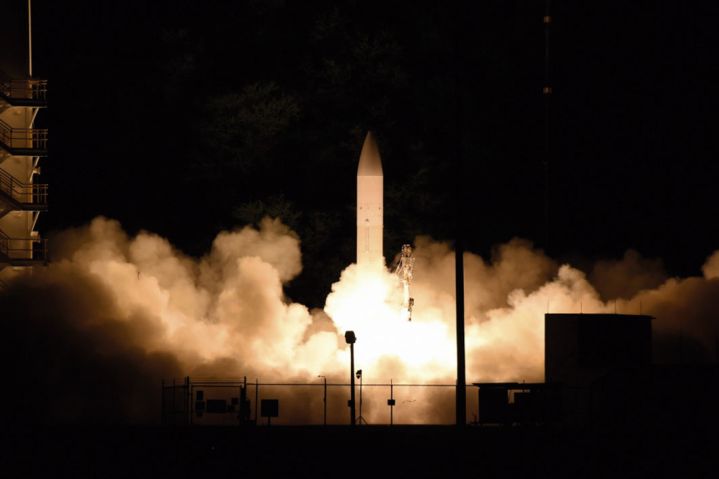
The US Army and US Navy, under the auspices of the US Department of Defense (DoD), jointly executed the second test of the developmental Common Hypersonic Glide Body (C-HGB) in a flight experiment conducted from the US Navy’s Pacific Missile Range Facility in Kauai, Hawaii, on 19 March.
According to a DoD statement, issued on 20 March, the C-HGB “flew at hypersonic speed to a designated impact point”. In parallel, the US Missile Defense Agency (MDA) monitored and gathered tracking data from the flight experiment to inform its ongoing development of systems designed to defend against adversarial hypersonic weapons.
“Information gathered from this and future experiments will further inform DOD’s hypersonic technology development, and this event is a major milestone towards the department’s goal of fielding hypersonic warfighting capabilities in the early-to mid-2020s,” the DoD statement noted.
“This test builds on the success we had with Flight Experiment 1 in October 2017, in which our C-HGB achieved sustained hypersonic glide at our target distances,” said Vice Adm Johnny R Wolfe, Director, Navy’s Strategic Systems Programs, the lead design authority for the C-HGB. “In this test we put additional stresses on the system and it was able to handle them all. Today we validated our design and are now ready to move to the next phase towards fielding a hypersonic strike capability,” he added.

A Common Hypersonic Glide Body (C-HGB) launches from the US Navy's Pacific Missile Range Facility during a Defense Department flight experiment in Kauai, Hawaii, on 19 March. (US Department of Defense)
Mike White, Assistant Director, Hypersonics, at US Office of the Undersecretary of Defense, Research, and Engineering (Modernisation), said that the glide body tested on 19 March “is now ready for transition to army and navy weapon system development efforts”.
Looking to read the full article?
Gain unlimited access to Janes news and more...


